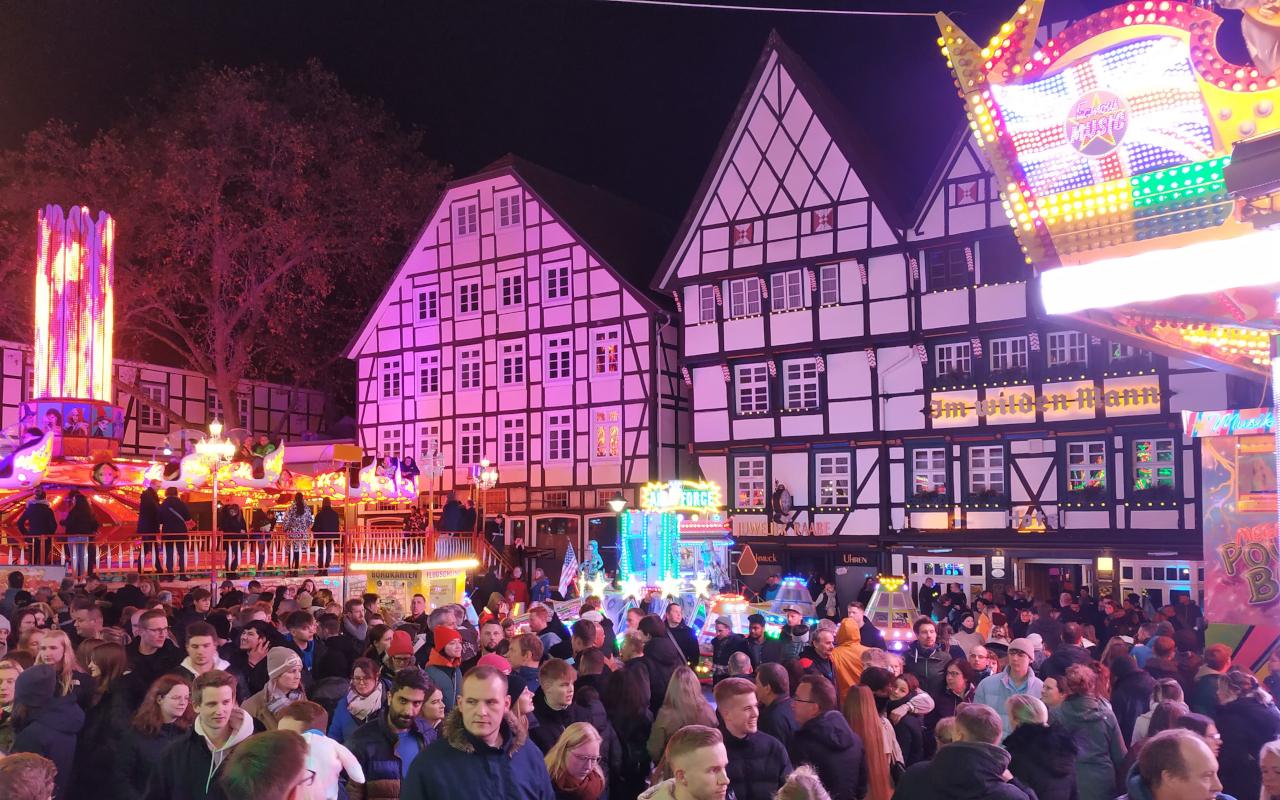If there is one thing the Germans can boast about, among many other things we already know, it is the fairs they celebrate every chance they get. And although what we know most about Germany in terms of celebrations is the Oktoberfest and the Christmas markets, in my two years living in the country, I discovered that they have a penchant for small fairs and street markets.
The fair I am going to tell you about has indeed little of the small, but it has a lot of the urban: all of the stalls are distributed in the streets and squares of the city, packed between low buildings, as is typical of this country, and some of them fly over the roofs of the houses. This breaks with the custom of holding these amusement fairs in the outskirts of cities, taking place instead in the heart of the town.
@thecoasterrides Allerheiligenkirmes Soest described in one single video! 😯 #kirmes #kermis #fahrgeschäft #ride #soest #allerheiligenkirmes #rollercoaster #closecall #allerheiligenkirmessoest ♬ Glue – Bicep
For this reason, the beautiful town of Soest is regularly transformed into a unique spectacle of lights, sounds, colors, and fun. Meet the Aller Heiligen Kirmes, the Allerheiligenkirmes in Soest: the largest fair in Europe held in an old town.
Content index
Where is Soest: location in Germany
Soest is located in the western part of the country and belongs to the state of North Rhine-Westphalia. With a distinct medieval character, its size and population, not reaching 50,000 inhabitants, make it one of the most special cities in this area, as well as touristic. The nearest city is Dortmund, but Münster, Hamm, Paderborn, and Bielefeld are also only a few kilometers away.
Airports near Soest include Dortmund, Münster, and Paderborn/Lippstadt.
History of the festival and what you will find at the Soest Kirmes
The Soest All Saints Fair dates back to the 14th century, specifically to 1338, when it was known as the Medieval Free Fair of the German Hanseatic League. Like so many events from that time, its origins are religious, as the first time it was held (or at least recorded) was for the consecration of the Priests’ Church, the oldest in the city.
The fair, which has evolved over the centuries, brings together 300 fairgoers, merchants, and restaurateurs in a total area of 50,000 m2. The attractions – about 40 of them – are state of the art and create a unique combination of lights, pirouettes, and sounds that contrast with the buildings and streets that make up the historic center of Soest.
Among them all, there are more than 15 designed for the little ones of the house, so that this German fair has positioned itself not only as the main fair of the North-Rhine and the largest held in an old town in Europe, but also as a must for German families in this area.
This event, one of the most varied and special of North Rhine, is practically compulsory for the inhabitants of the neighboring towns and cities, and that is because during the five days that the Soest Kirmes lasts, the city receives over a million visitors, a number that is multiplied by 20 to its inhabitants.
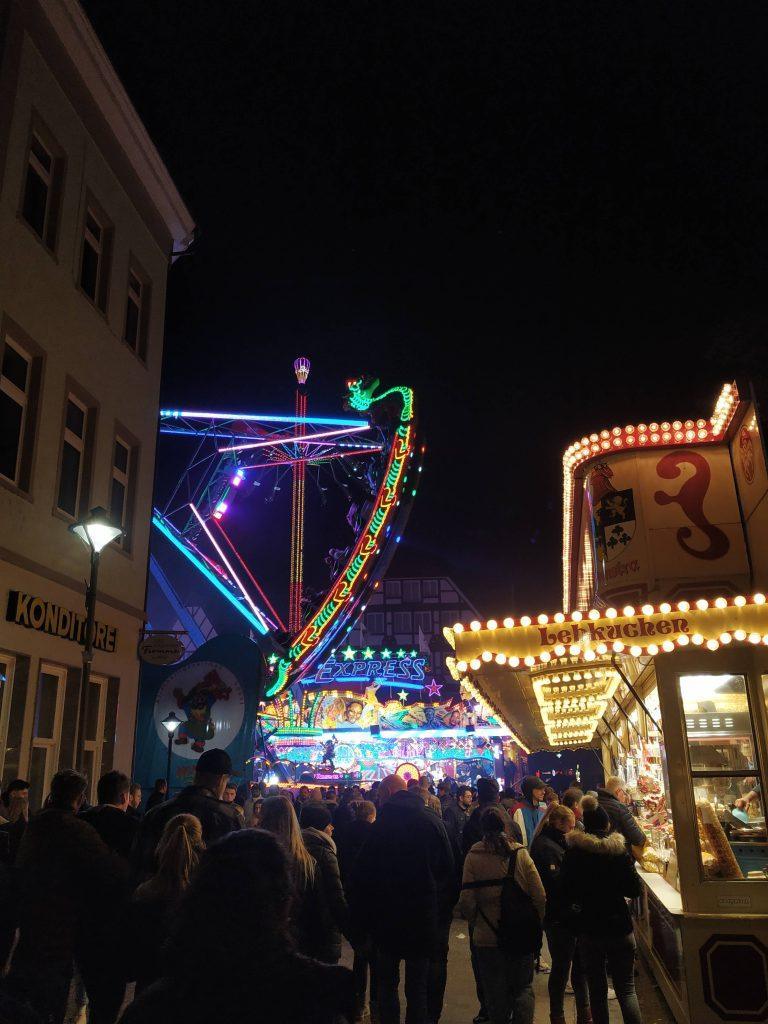
When is the Allerheiligenkirmes Soest? Dates, schedule and agenda
It takes place at the beginning of November, starting on the Wednesday after All Saints Day, and always lasts five days, from Wednesday to Sunday. This year it is the 867th All Saints Fair in Soest, from November 5 to 9.
These are the dates for the next edition:
- Wednesday, 12:00 to 11:00 pm.
- Thursday, 10:00 am to 11:00 pm.
- Friday, 12:00 pm to 2:00 am.
- Saturday, 10:00 am to 2:00 am.
- Sunday, from 11:00 am to 10:00 pm.
At this German fair, the program is very simple, because there are no isolated events, but the Soest Kirmes itself is the event. A special day is Thursday, when the Aller Heiligen Kirmes Horses Fair is held, and the weekend, when hundreds of thousands of visitors from neighboring regions come to Soest to enjoy this German flagship fair in the North Rhine region.
The annual horse fair continues the tradition of selling horses, livestock, machinery, and other items of the past, with more than 100 traders taking part, and reflects very well how this day was celebrated in the old days.
Aside from the tradition, the main attraction is the dozens of rides that crowd the streets. If you like them, you will be happy to know that there are big names like Konga, Mr Gravity, Loop Fighter, Robotix; but also, great classics like Wilde Maus, Nessy, or Big Monster.
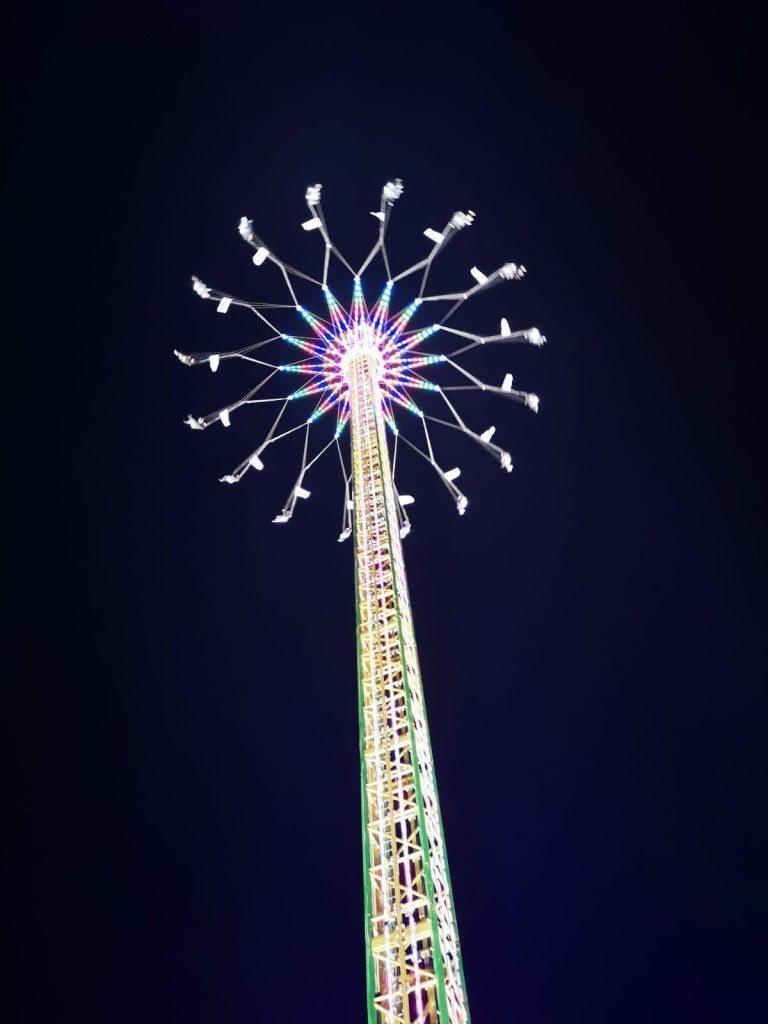
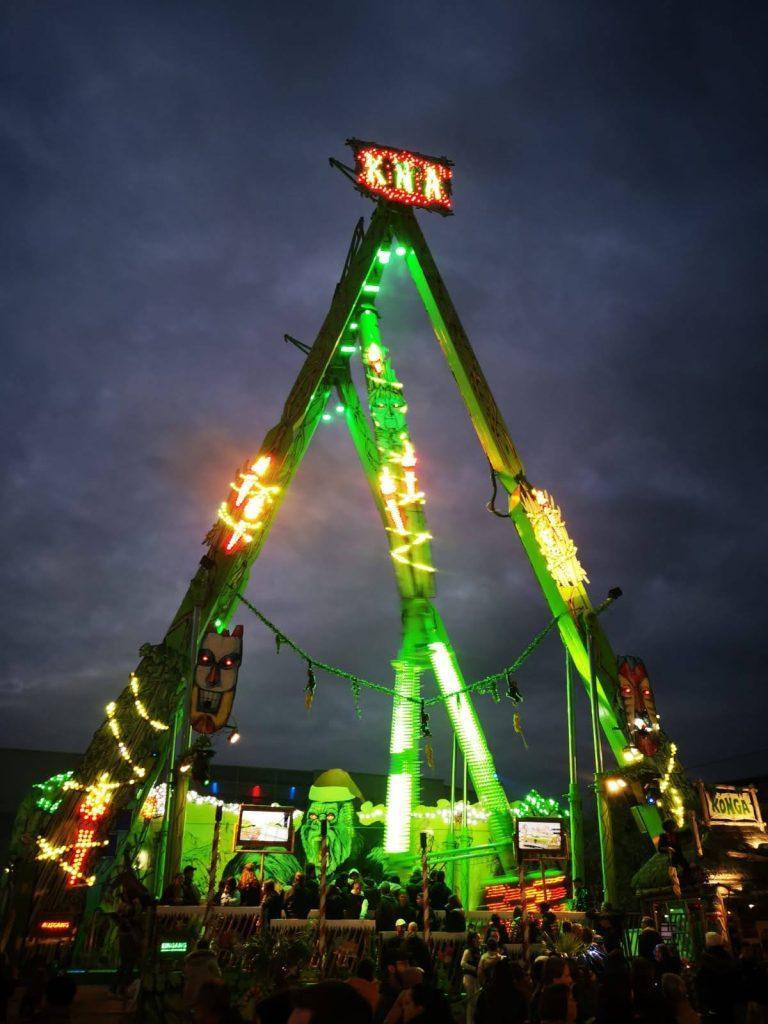
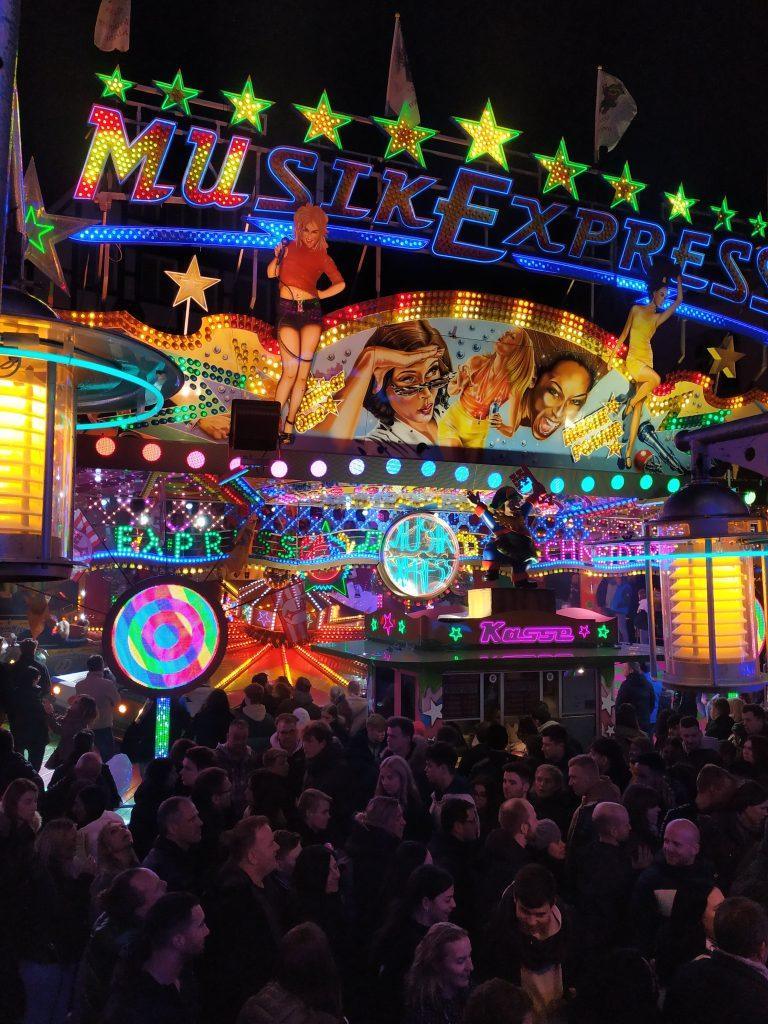
How much does it cost to go to the All Saints Fair in Soest?
This German open-air fair is free of charge. There is no need to buy a ticket, reserve a seat, or pay for a pass; all you have to do is enter the city and pay for the rides you want to ride.
If you do not want to go on any of them, you can enjoy the atmosphere without spending a single dollar. Of course, while you are there, I advise you to try some of the proposals that attract so many devotees, or buy some German products at the stalls.
The price of the rides varies depending on the type of attraction; in 2024, they ranged from $5 to $10. In general, the prices are very similar to those of the rides in most Spanish cities, but the rides in Soest last longer and the facilities are extremely well maintained.
They usually have a bit of a show – something that happens in other places – with live commentary, lots of music and entertainment for young and old.
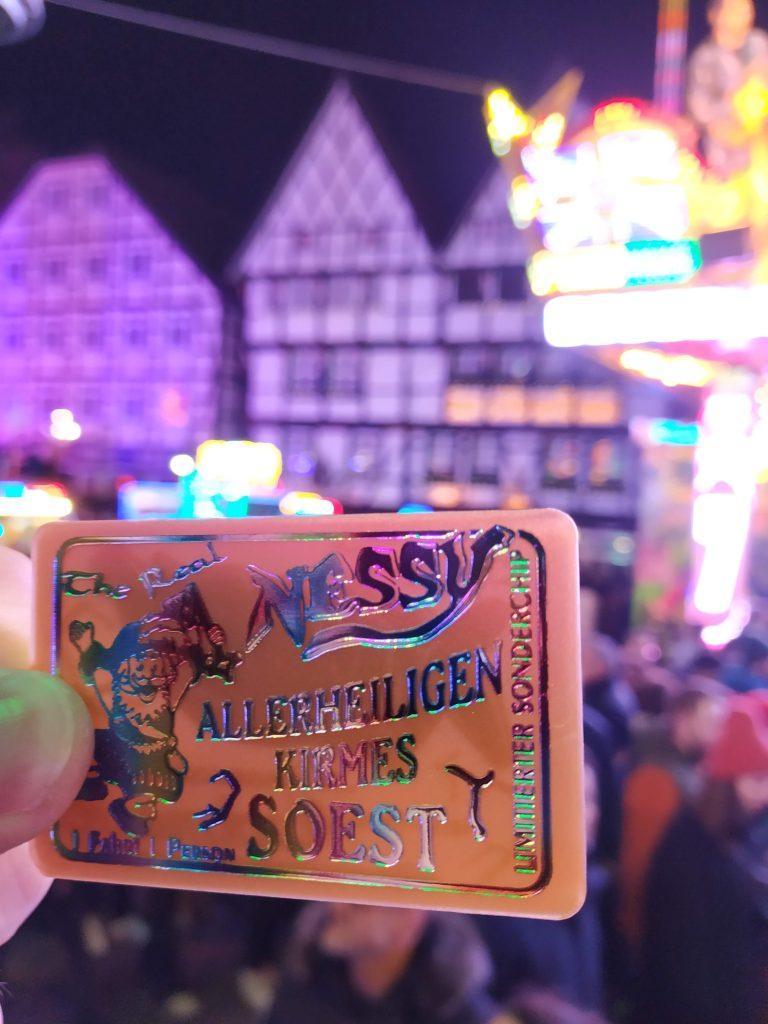
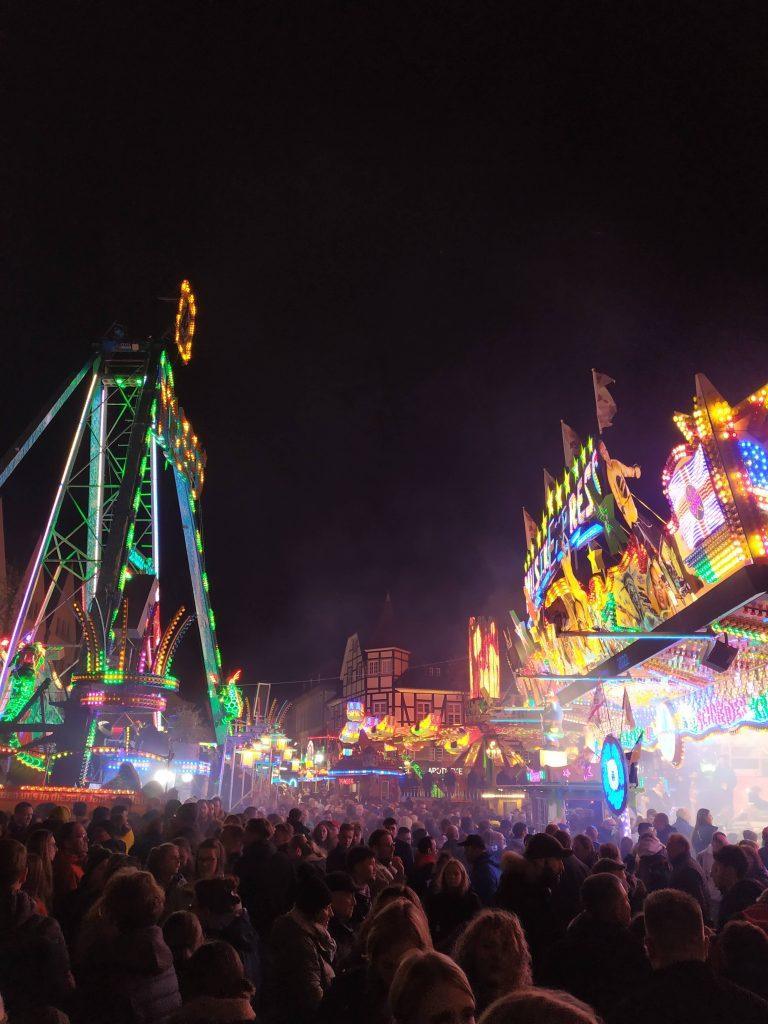
Food stalls: another unmissable feature of this German fair
There is no German fair without food and drink, so in addition to the rides, the streets are filled with wooden booths – like Christmas markets – where you can eat all kinds of dishes and snacks typical of these fairs.
There is no specific place to eat – although some of the stalls are larger and set up as a bar and restaurant, with snack tables – but the stalls are distributed throughout the streets of Soest, just like the huts.
Nevertheless, there are some areas where the gastronomic offers are grouped: around the Rathaus, in the Historischer Jahrmarkt, in Theodor-Heuss-Park, or on the streets Nötten-Brüder-Wallstraße and Dominikanerstraße. But as you can see on the official map, the stalls where you can buy food and snacks or have a drink are spread all over the fair.
On the map you can see where the food and drinks are usually located -marked in orange – as well as the rides and shows – marked with their name and in red/yellow –, and the raffle booths – marked in green -, although you know that since the official program for 2025 has not been published yet, it may be outdated. However, the three times I have been to this German fair, it has usually had the same layout, so you can take it as a reference.
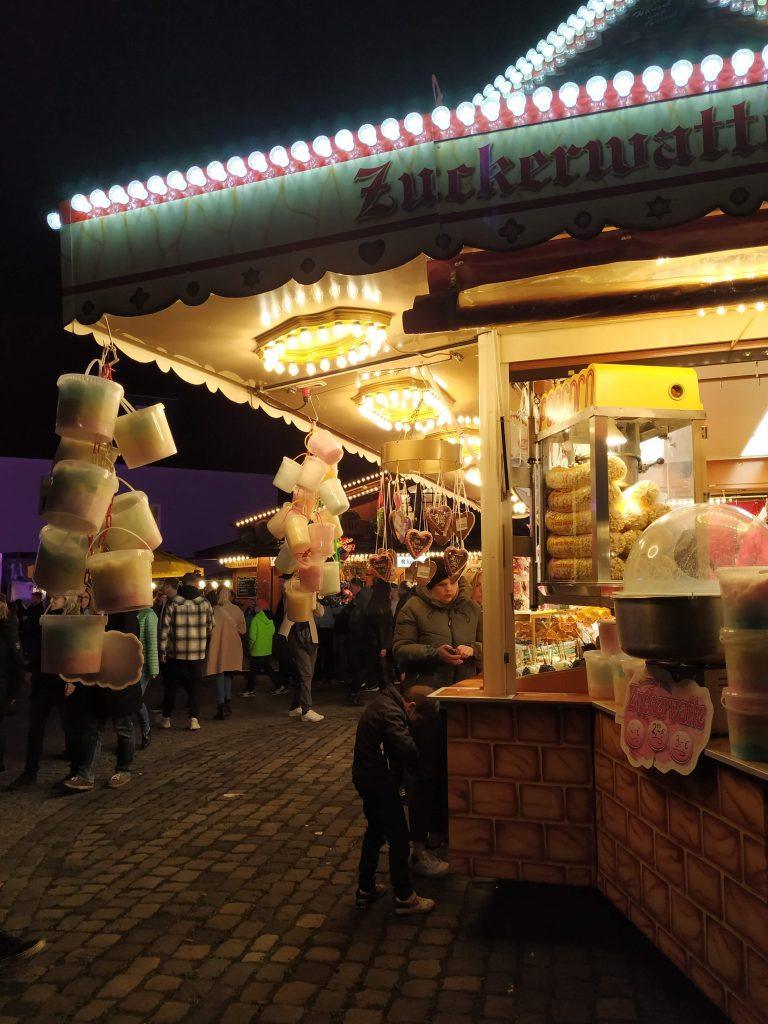
And what is typical for the Allerheiligenkirmes in Soest?
Well, following the tradition of German fairs, you will find what you find at most of them: German sausages of various types and sizes, charcuterie or different types of fish served in brotchen (bread), fried potatoes or accordion-style, mushrooms or cauliflower with sauce (one of the favorites), kebabs, bretzels, langosh, the typical reibekuchen, pizza and currywurst pommes.
That’s the savory stuff, but if we moveon to the sweet stuff, it’s probably the most traditional of the fair: fruit skewers with chocolate or candied sugar (especially grapes, strawberries, apples and bananas), candied nuts, sweet popcorn and cotton candy, all kinds of sweets (candy, licorice, jelly beans), and churros, pancakes and waffles.
As far as drinks are concerned, there is a little bit of everything: soft drinks and common drinks are also accompanied by the typical glühwein – mulled wine, which is typical for Christmas markets, but also for the fairs where the cold weather is already lurking – and a typical drink of the All Saints Fair in Soest: the bullenauge -bull’s eye-, a mixture of coffe liqueur and cream, which is typical for this fair – though not exclusive – and which is not missing in any stall.
If you go, you cannot miss this
You can’t ignore it: in Soest, and at most Christmas markets and fairs, you have to buy and gift Lebkuchen hearts. You’ll see them everywhere: heart-shaped cakes, colorfully decorated and dedicated to oma (grandma), with phrases to remember this Soest market, dedicated to the couple, to a group of friends, with all kinds of wishes…
There will be lots of tombolas, competitions and games for all ages, so you won’t want to miss the horse racing, the duck fishing or the typical target games, as well as the rides, the food stands and the souvenirs for sale.
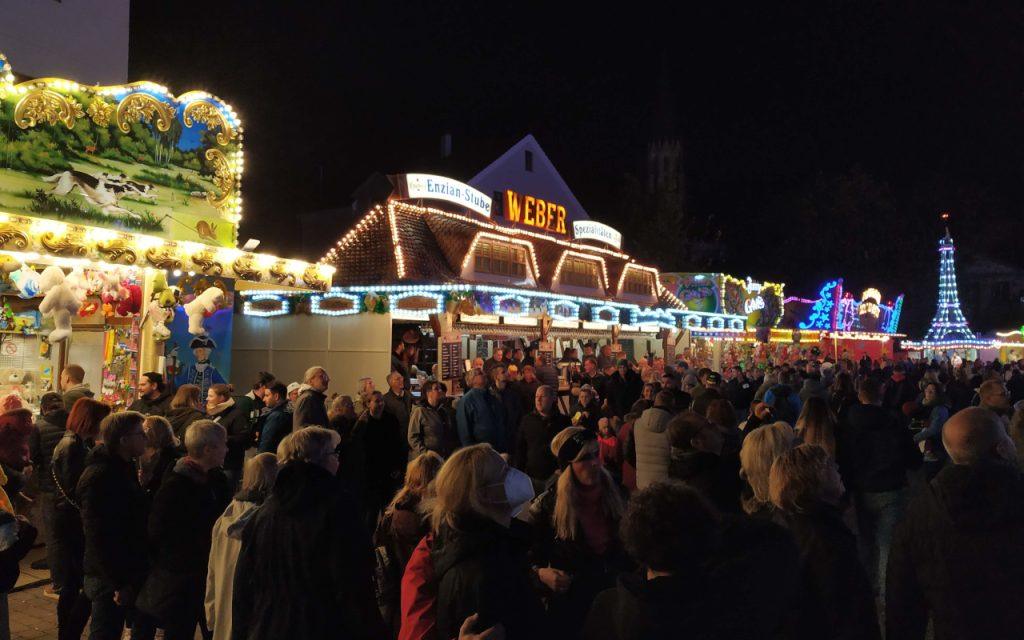
How to get there, where to park, and where to sleep?
Since it is a fair attended by thousands of people, especially in the afternoon, it is important to have all the logistical under control, so here are some good options for accommodation, where you can park to avoid spending hours looking for a spot, and what are the easiest options to get closer to the city if you are visiting it from the surrounding area.
How to get to the Allerheiligenkirmes in Soest
As soon as you leave the train station in Soest, you will find the fairgrounds, so this is the most recommended way to get to the Soest Kirmes. In addition to the usual frequencies of the German rail network, Deutsche Bahn, EuroBahn, and TRI Train Rental GmbH offer additional transfers to increase the frequency.
If you prefer to travel by bus, DB Westfalenbus is also an option.
Please note that road accesses are usually congested due to the large number of vehicles entering the city at peak times, so the fair organizers recommended leaving the car at home and using public transportation.
Where to park if you are driving from the area
In general, the entire area of the old town will be closed – or will when it gets full – because this is where the fair takes place. The city provides a number of parking areas so that visitors can enjoy the All Saints Fair in Soest without any problems, which you can check on the official map.
If you are coming during the weekend, it is recommended to park at the P+R (park and ride) lots at the ‘Kaufland’ and ‘Toom’ supermarkets, at Senator-Schwartz-Ring, and the CEAG premises.
If you use this P+R service, a shuttle bus will take you directly to the Old Town every 10 minutes, stopping at the Sparkasse bank (so convenient if you need to withdraw money) on Puppenstraße – at the gate to the Old Town, and the price of 3€ round trip for those over 14 years old.
In total, and as you can see on the poster, there are more than 8 parking lots outside the Old Town where you can leave your car.
Where to sleep during the fair
Soest is a small town, so there are not many hotels. This is why it is important that if you are thinking about coming to the Soest Kirmes and staying overnight, which I think is a very good idea, you should book in advance so that you don’t run out of accommodation or end up paying double the usual price.
These are some of the best-rated hotels:
- Dudenhaus Soest, 6 minutes from the City Hall, and rated 9.8/10.
- Ferienwohnung am Wall, 14 minutes from the city centre and rated 9,2/10.
- City Motel Soest, 12 minutes from the centre and rated 8.9/10.
- Hotel Sustao, 14 minutes from the centre and rated 8.5/10.
- Hotel Pilgrimhaus, 8 minutes from the centre, 8.5/10.

What to see around Soest
Münster
This university town, just a few kilometers from Soest and one of the most beautiful in the region, is a must if you have time to explore the area in addition to attending the fair. Visit the Prinzipalmarkt and other small squares, be surprised by the original bike parks, visit the beautiful cathedral, and have a coffee outside with a view of the town hall.
Sauerland
This region is perfect if you want to enjoy nature and get away from modernity, technology, and the sounds of the Allerheiligenkirmes in Soest. Some of the best suggestions are the routes that take you to discover the Sauerland Rothaargebirge Nature Reserve, spend a day enjoying the outdoors in Möhnesee, or simply walk along one of the many hiking trails available.
One that I love is the one that takes you to the Waldfreibad Gudenhagen outdoor swimming pool, although from what I see on their website, it has been closed since September. I understand it opens for the summer season.
Soest is halfway between Sauerland and Münsterland.
Dortmund
The largest city in North Rhine-Westphalia is also an ideal choice for spending a day strolling through its central streets, going to its famous football stadium where Borussia Dortmund plays, climbing the Florian Tower in the park of the same name to get a view of the surroundings, visiting the U-Tower to see art exhibitions, or ending the day with a walk along the beautigul and peaceful Phoenix See.
Other similar funfairs in Germany
- Oberhausen: Fronleichnamskirmes, in June.
- Düsseldorf: Rheinkirmes, in August.
- Stuttgart: Canstatter Folk Festival, between September and October.
- Hamburg: Hamburger Dom, with three dates – November and December, April, and May, July and August.
- Munich: Oktoberfest, in September and October.
What makes Soest Kirmes special and why should you include it in your plans?
This fair is not as well known in Germany as other big fairs – see Oktoberfest – as it is a local tradition, but as I told you, it is the largest fair held in the historic center of a city.
In addition, it is held in November, so it offers an incredible plan when winter is already lurking in the country, preparing people for what is to come: the beloved Christmas markets.
I love it because I visited it for the first time with my favorite person, and it is especially beautiful thanks to the lights, the stalls, and the panoramic view of the city that combines typical old buildings with modern and colorful attractions.

Something else I find fantastic about the organization is that this German fair is accessible to all people, including those with reduced mobility. There is also a contact mailbox available for the public to explain what they need or what people with disabilities would need (more info here).
If rides are your thing, the Soest Kirmes will not disappoint. Can you believe that if all the rides were lined up in a row, it would be 3 kilometers of non-stop fun? Enjoy Soest!

